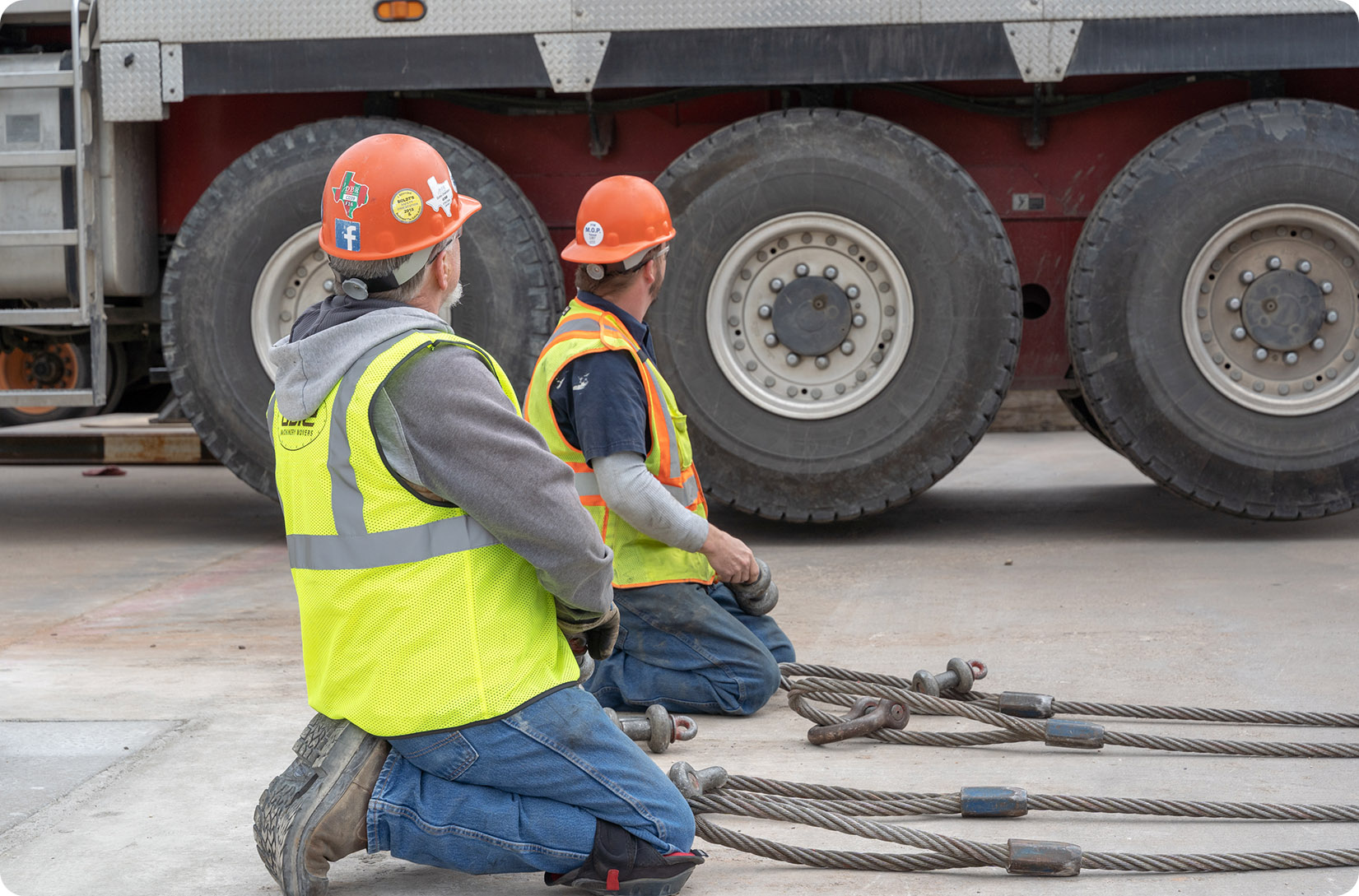Forklift safety tips
If you’ve witnessed a forklift accident at a worksite you aren’t alone. The Occupational Safety and Health Administration (OSHA) notes that over 1,000 forklift accidents happen annually. Those accidents cause over 97,000 injuries, thousands in expensive repairs and could cost someone their life.
At Able Machinery Movers we work with forklifts on a daily basis. Forklift safety is something we take seriously. That’s why we’ve put together a list of forklift safety tips that can reduce the risk of damaging expensive equipment and hurting your invaluable employees.
10 ESSENTIAL FORKLIFT SAFETY TIPS
This list is not exhaustive, but does include the cardinal rules of forklift safety that should be followed every time a forklift is in operation.
ALWAYS CHECK THE FORKLIFT BEFORE USE
Operators should look the forklift over before using to ensure there are no mechanical issues. In particular, operators should check the:
- Backup alarm
- Brakes
- Fluid levels
- Horn
- Lifting and loading components
- Lights
- Seat belt
- Tires
USE THE RIGHT TYPE OF FORKLIFT FOR THE JOB
Able Machinery Movers has a fleet of forklifts that can handle any job. Using the correct type of forklift is absolutely essential for safety. For example, our narrow access and low overhead forklifts reduce the possibility of the forklift running into something when space is limited.
KNOW THE STABILITY TRIANGLE
A forklift is much different than a vehicle in terms of it’s design. Forklifts have higher centers of gravity compared to a car or truck. But once the load is added the center of gravity can change. Another consideration is that a forklift has a three-point suspension system. The three support points are at the center of the back axle and the ends of the front axle. You need to stay within the stability triangle while the forklift is in use.
ALWAYS BE AWARE OF YOUR SURROUNDINGS
Because there are so many blind spots and a loading zone can be hectic, operators need to be hyper aware of their surroundings. Before getting into the forklift take a few minutes to examine the work environment so you have a better idea of what to watch out for. If you have to, use a spotter to help when visibility is limited.
USE THE SEATBELT
It may seem a little ridiculous to wear a seatbelt if you’re only going a few miles per hour, but it’s a necessary safety precaution. If the forklift were to tip over the operator can be seriously injured if they aren’t wearing a seatbelt.
PUT SAFETY BEFORE SPEED
The #1 rule in forklift safety is to not make speed a priority. Slow and steady is always the safest way to operate a forklift.
DON’T DRIVE WITH THE LIFT UP
The lift should never be up while the forklift is in motion. Doing so increases the risk of a collision or injury.
AVOID QUICK STOPS, STARTS AND TURNS
Keeping the load within the forklift’s stability triangle isn’t easy once you’re in motion. Quick stops, starts and turns can change the weight distribution.
USE THREE POINTS OF CONTACT WHEN EXITING
Getting off the forklift can be just as dangerous as operating it. The rule of thumb is to use three points of contact when you are exiting the forklift.
MAINTAIN YOUR EQUIPMENT
No matter how safe an operator is, if the machine isn’t functioning properly it can cause an accident. OSHA urges all operators to keep their equipment maintained and fix problems as soon as they are found.
FORKLIFT SAFETY TRAINING
All employees who will be operating or working around forklifts should have forklift safety training. It’s so important OSHA requires that operators participate in a training program. The training program must cover:
- Formal instruction on the equipment
- Practical, hands-on training
- Workplace performance evaluation
The forklift safety training requirement is outlined in OSHA’s Powered Industrial Trucks Standard – 29 CFR 1910.178. It states that “the employer shall ensure that each powered industrial truck operator is competent to operate a powered industrial truck safely, as demonstrated by the successful completion of the training and evaluation”
If you’d like to use visual aids for your training program, there are forklift safety videos on SafetyVideo.com.
IMPORTANT NOTE: Employees need to be trained on each type of forklift they will be using. These specialized machines function in specific ways so training on one type of forklift may not apply to another.
FORKLIFT SAFETY CHECKLIST
When you’re using one of our forklifts that’s capable of lifting 80,000 pounds off the ground you want to be sure you’re taking every safety measure. Use the forklift safety checklist below to make sure you’ve covered all your bases.
- Do a visual inspection prior to operation
- Choose the right forklift for the job
- Understand the stability triangle
- Examine your surroundings
- Wear the seatbelt
- Go slow and steady
- Keep the forklift down while in motion
- Avoid quick starts, stops and turns
- Exit the forklift using three points of contact
- Inspect the forklift afterward for maintenance
